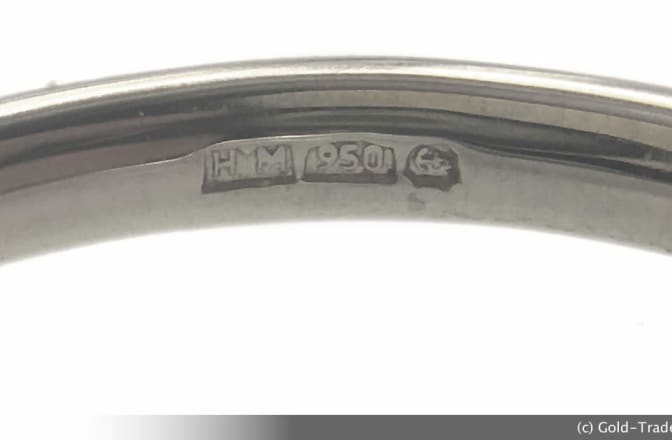Platinum doesn't often make headlines like gold or silver. It's quieter, rarer, and often misunderstood - but behind that subtle reputation lies one of the most remarkable metals on Earth. From its role in cleaning car exhausts to powering heart pacemakers, platinum is everywhere. You just might not notice it.
This article dives into the most interesting facts about platinum - its properties, uses, and historical and economic significance. Whether you're a curious reader, investor, or someone deciding between platinum and gold for a ring, this will give you a deeper appreciation for the metal that's more than just precious.
- Platinum is rarer than gold
Only about 190 metric tons of platinum are mined each year, compared to around 3,000 tons of gold. All the platinum ever mined would barely cover your ankles in an Olympic-sized swimming pool. - Its density is among the highest of all metals
At 21.45 g/cm³, platinum feels significantly heavier than gold or silver. It's a subtle sign of quality that you can feel when holding jewellery made from it. - Platinum's melting point is a staggering 1,768°C (3,215°F)
That's over 700°C higher than gold. This makes it ideal for use in high-temperature environments, from aerospace to chemical laboratories. - It takes 7 to 12 tonnes of ore to produce a single ounce of platinum
The refining process can take up to six months. That kind of effort explains the price - and the prestige. - Platinum is hypoallergenic
It contains no common allergens and doesn't tarnish, making it perfect for sensitive skin, medical implants, and long-term wear. - It's used in about 90% of new cars
Specifically, in catalytic converters - where it helps reduce harmful emissions. Without platinum, vehicle pollution would be far worse. - Platinum can be drawn into wire over 2,000 meters long from just one gram
Its ductility makes it useful in electronics and precision instruments. - The Hope Diamond is set in platinum
Many of the world's most valuable gemstones are, due to platinum's strength and ability to hold stones securely over time. - During World War II, platinum was classified as a strategic metal in the USA
Its use in jewelry was banned so supplies could be reserved for military applications. - Platinum coins were once real currency
Russia minted platinum roubles between 1828 and 1845 - the first nation to circulate the metal as money.
Platinum in Industry
Beyond its beauty and symbolism, platinum is deeply embedded in the modern industrial world. Around 60% of annual platinum consumption goes toward industrial applications - many of them essential to daily life, but rarely noticed.
One of the most prominent uses is in catalytic converters, where platinum helps convert harmful vehicle emissions into less toxic gases. This alone plays a significant role in reducing urban pollution. But that's only the beginning.
Platinum also plays a critical role in temperature-sensitive equipment like thermocouples, which are used in high-heat environments such as foundries and scientific research labs. Similarly, platinum crucibles are prized in laboratory settings for their resistance to chemical corrosion and extreme temperatures.
- Read more about platinum crucibles
- Explore the types of platinum thermocouple wire
Platinum's stability and electrical conductivity also make it essential in medical devices such as pacemakers, as well as in hard disk drives, chemical refining, and even fuel cells used in clean energy technology.
It's not just a precious metal - it's a workhorse in modern science, health, and environmental systems.
The Extraction Process: A Test of Patience and Precision
Platinum mining is incredibly demanding. Most of the world's supply comes from the Bushveld Complex in South Africa, where deep underground tunnels lead to ore deposits containing platinum-group metals (PGMs). Only trace amounts of platinum exist in the rock, so vast volumes must be processed to yield a small return.
After mining, ore is crushed and milled to release the metal. It's then subjected to smelting at around 1,600°C, followed by chemical treatments using sulfuric acid and other agents to remove unwanted metals. The result? Platinum with a purity of 99.95% or higher.
Even so, the yield is tiny: around 6 grams per metric ton of ore. It's no wonder that platinum costs $500 to $1,000 per ounce just to extract.
Environmental Considerations
This complexity comes at an environmental cost. Platinum mining is energy-intensive and often leads to land disruption, water usage, and chemical waste. As demand increases, especially from green industries like fuel cells, producers are under growing pressure to adopt sustainable practices.
Thankfully, platinum is recyclable. Old catalytic converters and electronic components are major sources of secondary platinum. Recycling helps reduce environmental impact and makes better use of what's already above ground.
Platinum in Jewellery and Art
Thanks to its purity and resistance to wear, platinum is a favorite in high-end jewelry. Most platinum jewelry is 95% pure, compared to 18K gold's 75%. It also doesn't fade or thin out with time, so prongs holding diamonds stay secure - ideal for heirloom pieces.
One of the most iconic uses? Tiffany & Co.'s six-prong setting, developed in 1886 specifically to showcase diamonds in platinum's strong yet minimal embrace.
Artists, too, have used platinum in sculpture and decorative work. It doesn't tarnish, doesn't corrode, and maintains its finish over time - perfect for pieces meant to last.
Need Help Identifying Your Platinum Items?
If you're unsure whether a piece of jewellery or scrap item is truly platinum, hallmarking can help. UK hallmarking laws require platinum to be marked with specific stamps that indicate its purity.
- View our simple platinum hallmark guide
A Brief History of Platinum
Though pre-Columbian tribes in South America used platinum alloys for decoration, the metal wasn't formally recognised in Europe until the 18th century. Early reports described a mysterious metal that no fire could melt, referring to platinum's unusually high melting point.
Two men are often credited with its modern discovery:
- Antonio de Ulloa, a Spanish explorer, observed it in Ecuador in 1736.
- Charles Wood, a British metallurgist, studied samples found in Jamaica in 1741.
Scientific interest followed quickly. The difficulty of working with platinum spurred decades of experimentation before the first malleable alloys were produced in the late 1700s. Platinum soon found use in scientific instruments and royal artefacts, and eventually in industrial and military applications.
Investing in Platinum: Volatility and Value
Platinum isn't just beautiful - it's also a speculative investment. Unlike gold, which tends to be more stable, platinum's price is closely tied to industrial demand, especially in the automotive and chemical sectors.
Historically, prices have fluctuated dramatically, from £580 to over $1,100 per ounce between 2007 and 2011. Today, platinum is trading at £1,152.60 / ozt.
Key trends influencing future value include:
- Anticipated market deficits between 2025 and 2029
- Ongoing demand from China's jewellery sector
- Increased interest in green technologies using platinum
- Global economic uncertainty driving investors toward alternative assets
Because of its volatility, platinum is often approached as a portfolio diversifier, rather than a core holding.
Selling Your Platinum?
Gold-Traders buys scrap platinum in many forms, from jewellery to thermocouple wire. If you're looking to sell, we offer same-day payments and regularly updated, competitive rates.
- See our current scrap platinum prices
A Metal That Punches Above Its Weight
For a metal that's physically heavy, platinum flies surprisingly under the radar. It doesn't glitter like gold or oxidise like silver, but it endures - quietly, powerfully - across centuries and industries. It helps keep our air clean, our hearts beating, our diamonds secure, and our science advancing.
So next time you see the word platinum - on a record, a credit card, or a wedding band - remember that it means more than just premium status. It's a symbol of rarity, strength, and enduring value.




